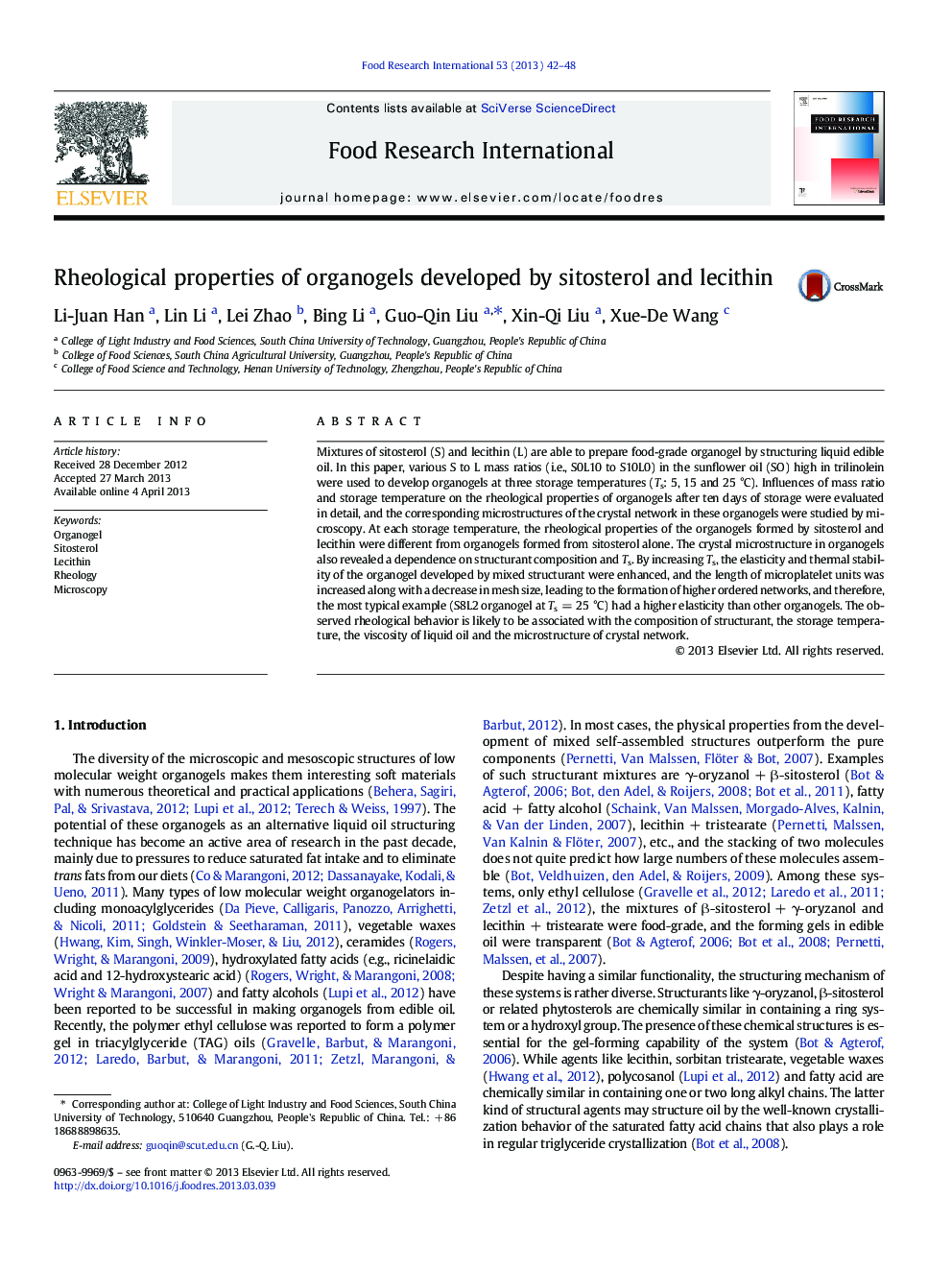| Article ID | Journal | Published Year | Pages | File Type |
|---|---|---|---|---|
| 6397656 | Food Research International | 2013 | 7 Pages |
Abstract
Mixtures of sitosterol (S) and lecithin (L) are able to prepare food-grade organogel by structuring liquid edible oil. In this paper, various S to L mass ratios (i.e., S0L10 to S10L0) in the sunflower oil (SO) high in trilinolein were used to develop organogels at three storage temperatures (Ts: 5, 15 and 25 °C). Influences of mass ratio and storage temperature on the rheological properties of organogels after ten days of storage were evaluated in detail, and the corresponding microstructures of the crystal network in these organogels were studied by microscopy. At each storage temperature, the rheological properties of the organogels formed by sitosterol and lecithin were different from organogels formed from sitosterol alone. The crystal microstructure in organogels also revealed a dependence on structurant composition and Ts. By increasing Ts, the elasticity and thermal stability of the organogel developed by mixed structurant were enhanced, and the length of microplatelet units was increased along with a decrease in mesh size, leading to the formation of higher ordered networks, and therefore, the most typical example (S8L2 organogel at Ts = 25 °C) had a higher elasticity than other organogels. The observed rheological behavior is likely to be associated with the composition of structurant, the storage temperature, the viscosity of liquid oil and the microstructure of crystal network.
Related Topics
Life Sciences
Agricultural and Biological Sciences
Food Science
Authors
Li-Juan Han, Lin Li, Lei Zhao, Bing Li, Guo-Qin Liu, Xin-Qi Liu, Xue-De Wang,
